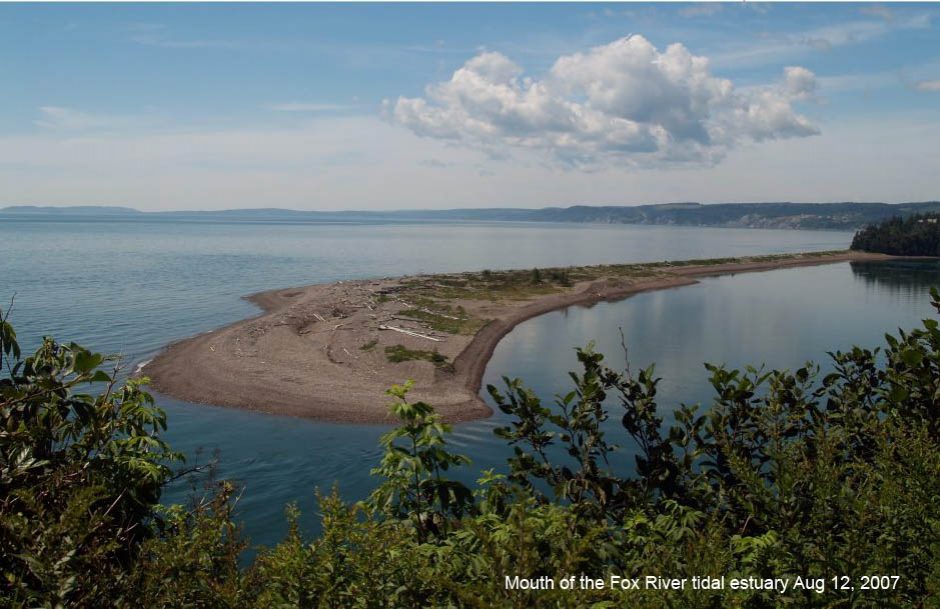Mi’kmawey Debert Cultural Centre
The future cultural centre is dedicated to sharing, protecting and exploring the stories and lives of our earliest ancestors and those who have come after them in Mi’kma’ki. Under Sa’qewe’l kmitkinal (Ancestor Live Here), view short videos describing Mi’kma’ki, Atuomjek (Advocate Harbour), L’mu’juiktuk Cape d’Or, Five Islands, Wa’so’q Partridge Island, Kkijinu Wtuoml Grandmother’s Cooking Pot, Partridge Island Geology
PARTRIDGE ISLAND
Partridge Island, called ‘heaven’ by Mi’kmaq, protected for generations to come
Nina Corfu, Jerry West for CBC Aug 22, 2016. “A Mi’kmaq storyteller is celebrating the preservation of Partridge Island in the Bay of Fundy near Parrsboro, N.S. — called Wa’so’q, or heaven, in Mi’kmaq — saying the Nova Scotia Nature Trust has helped protect an area of cultural significance.”
From Wikipedia: Partridge Island
Accessed Apr 25, 2021:
Partridge Island apparently got its name from a European translation of pulowech, the Mi’kmaq word for partridge.[9] The Confederacy of Mainland Mi’kmaq report that the Mi’kmaq themselves called Partridge Island “Wa’so’q,” which means “Heaven” because the island was a traditional place for gathering the sacred stone amethyst. It was also the mythic home of the grandmother of the legendary Mi’kmaq god-giant Glooscap.[10] According to Mi’kmaq artist and storyteller, Gerald Gloade, the natives also called Partridge Island “Glooscap’s grandmother’s cooking pot” because the waters around the island appear to boil twice a day when air trapped in holes in the basalt is pushed out as the tide rises.[11]
Legend has it that Glooscap lived on Cape Blomidon, across the basin from Partridge Island. His heroic exploits account for key features of the landscape, including perhaps, the dramatic tides of the Minas Basin. When his enemy, Beaver, built a dam across the Minas Channel from Cape Split to the Cumberland side, the waters not only flooded Glooscap’s herbal medicine garden at Advocate Harbour, they inundated the Annapolis Valley. Glooscap arrived on the scene, saw what the Beaver had done, and angrily smashed the dam with his paddle releasing the pent-up waters.[12] According to anthropologist Anne-Christine Hornborg, the daily breaking and re-building of a giant beaver dam serves as a metaphor for the powerful tides of the Minas Basin — not a literal explanation, but a symbolic representation of the natural environment.[13]
9. Hamilton, William B. (1996) Place Names of Atlantic Canada. Toronto: University of Toronto Press, p.377.
10. The Confederacy of Mainland Mi’kmaq. “The Story Begins” (PDF). Archived from the original (PDF) on 21 November 2008. Retrieved 22 December 2012.
11.Nova Scotia Archeology Society. “Tracing Lithic Sources in the Mi’kmaq Legends of Kluskap”. Archived from the original on 5 March 2016. Retrieved 23 December 2012.
12, Spicer, Stanley T. (1991) Glooscap Legends. Hantsport, Nova Scotia: Lancelot Press, pp.15-16.
Vistas: Little Thunder
This animated short, inspired by the Mi’kmaq legend “The Stone Canoe” explores Indigenous humour. We follow Little Thunder as he reluctantly leaves his family and sets out on a cross-country canoe trip to become a man.
Precontact Mi’kmaq Land Use
On Heritage Newfoundland and Labrador website..Also view related topics on this website
The Relationship between the Mi’kmaw People and the Fisheries: A Historical Perspective
On colchesterhistoreum.ca/
Mi’kmaq Holdings Resource Guide
Nova Scotia Archives. Comprehensive
MI’KMAQ TERRITORY & CULTURE
Daniel N. Paul, author of We Were Not the Savages. Many more resources on his website www.danielnpaul.com Please read DN Pauls essay (2011): The Hidden History of the Americas: The Destruction and Depopulation of the Indigenous Civilisations of the Americas by European Invaders “My presentation is designed to put on the table for discussion a long denied fact: the dispossessing of the Indigenous Peoples of the Americas by Europeans, and the near extermination of them in the process, is the greatest inhuman barbarity that this World has ever known.”
Encounters with tall sails and tall tales : Mi’kmaq society, 1500-1760
Wicken, William C. (William Craig), thesis, McGill Univesity
Mi’kmaw Theses Online
Cape Breton University
